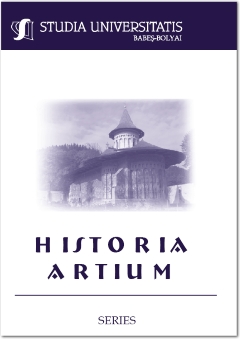ICONOGRAFIA SFÂNTULUI CARLO BORROMEO ÎN TRANSILVANIA EPOCII BAROCULUI
ICONOGRAPHY OF ST. CARLO BORROMEO IN TRANSYLVANIA DURING THE BAROQUE ERA
Author(s): Nicolae SabăuSubject(s): Fine Arts / Performing Arts
Published by: Studia Universitatis Babes-Bolyai
Keywords: iconography; apotropaic images; St. Carlo Borromeo.
Summary/Abstract: Iconography of St. Carlo Borromeo in Transylvania during the Baroque Era. The present academic discourse contains an iconographical and iconological approach; an introduction in the iconography of Transylvania Baroque referring to the manner in which the Catholic Church there adapted to the rules established during the Council of Trent; a late but mandatory conformity on the issue of sacred images (De invocatione, veneratione, et reliquiis sanctorum et sacris imaginibus, 1563) and to the norms in the erection and design of churches (Carlo Borrromeo, Instructiones fabricae et suppellectillis ecclesiasticae, 1572) in the province newly annexed to the Habsburg Empire. The author presents a number of religious characters endowed with apotropaic qualities who were invoked and depicted in Catholic Churches in Transylvania. The case study focuses on St. Carlo Borromeo, the ideal figure of the cardinal during the Catholic Reformation, present among the saints depicted on public monuments, in altar paintings and sculpture, on small statues, relief and silverwork inside religious buildings during the 18th and 19th centuries (Alba Iulia, Baia Mare, Grabaţ, Iecea Mare, Oradea, Sighetu Marmaţiei, Timişoara etc.). The present research was extended to encompass images from Europe in an attempt to identify iconographic models and sources of inspiration in the depiction of St. Carlo Borromeo in Transylvanian iconography.
Journal: Studia Universitatis Babes Bolyai - Historia Artium
- Issue Year: LVII/2012
- Issue No: 1
- Page Range: 5-30
- Page Count: 26
- Language: Romanian

